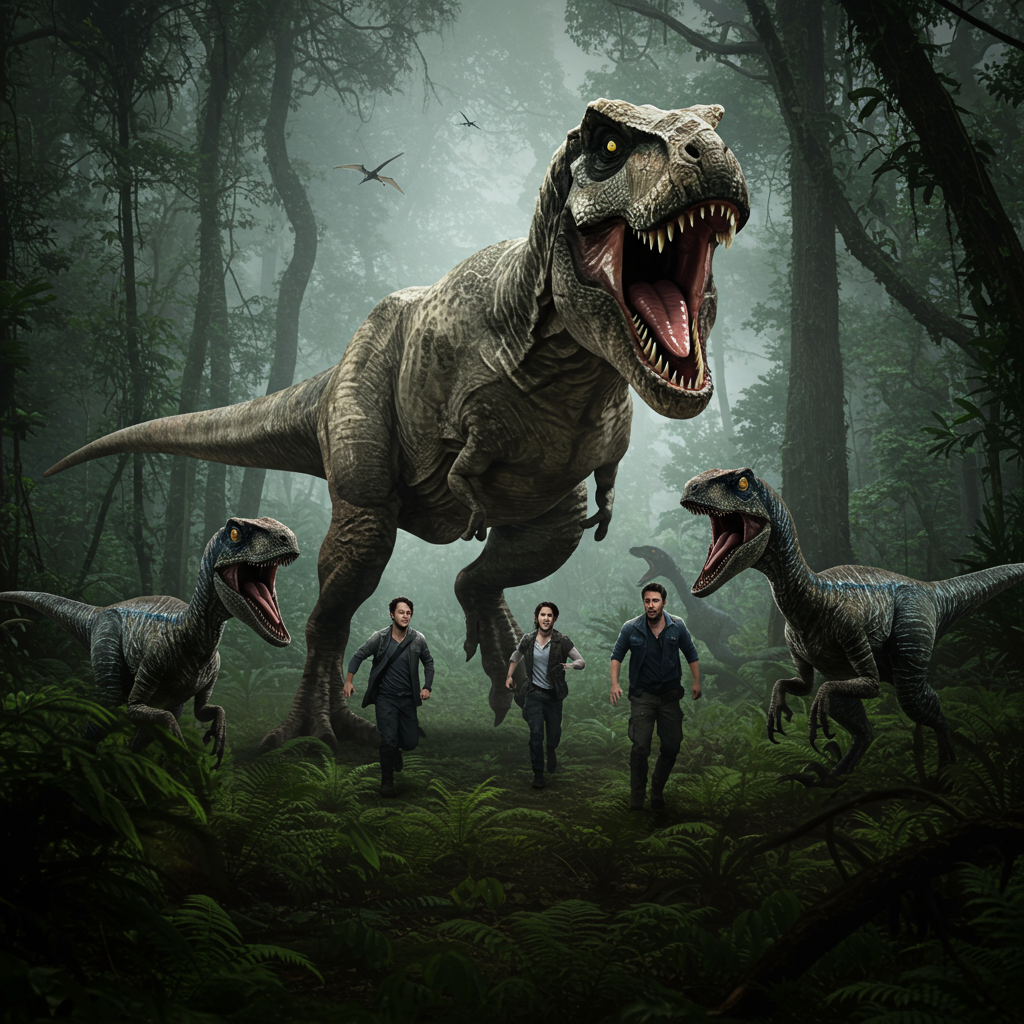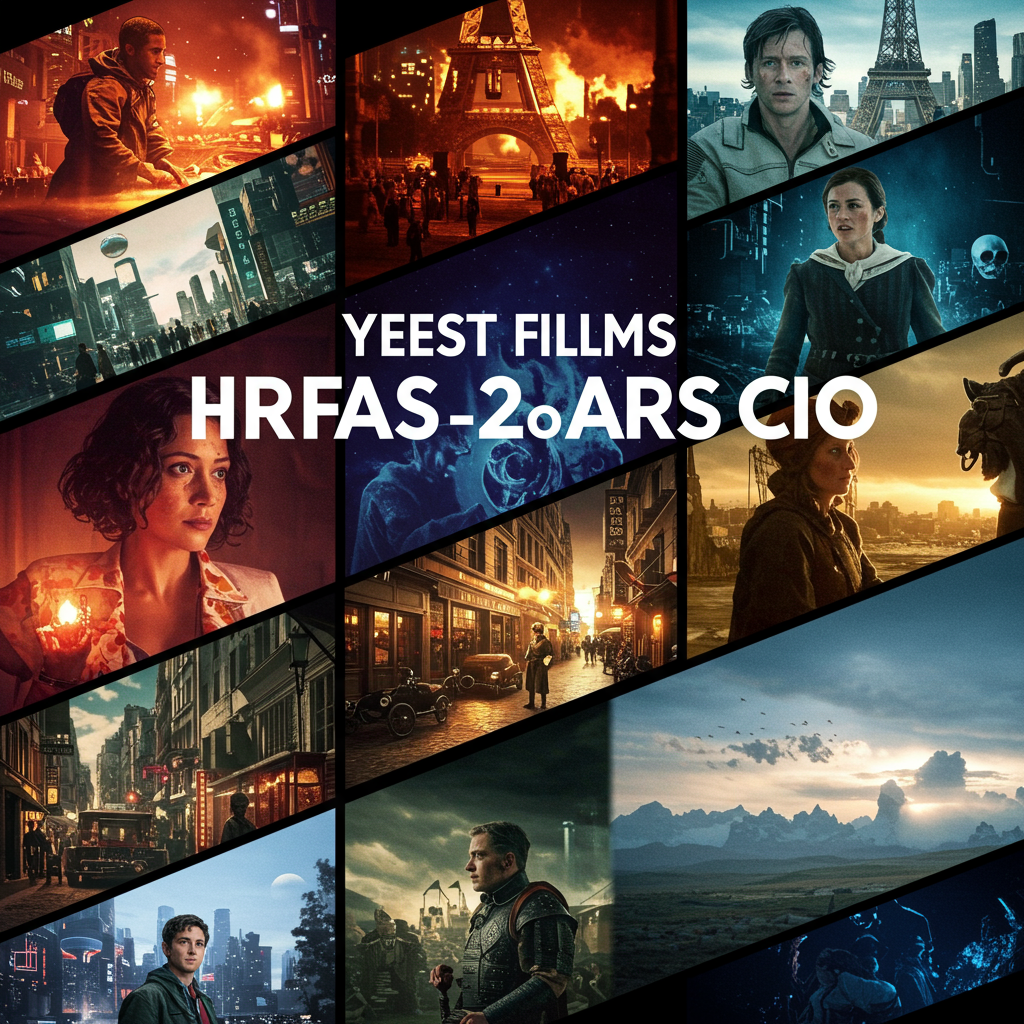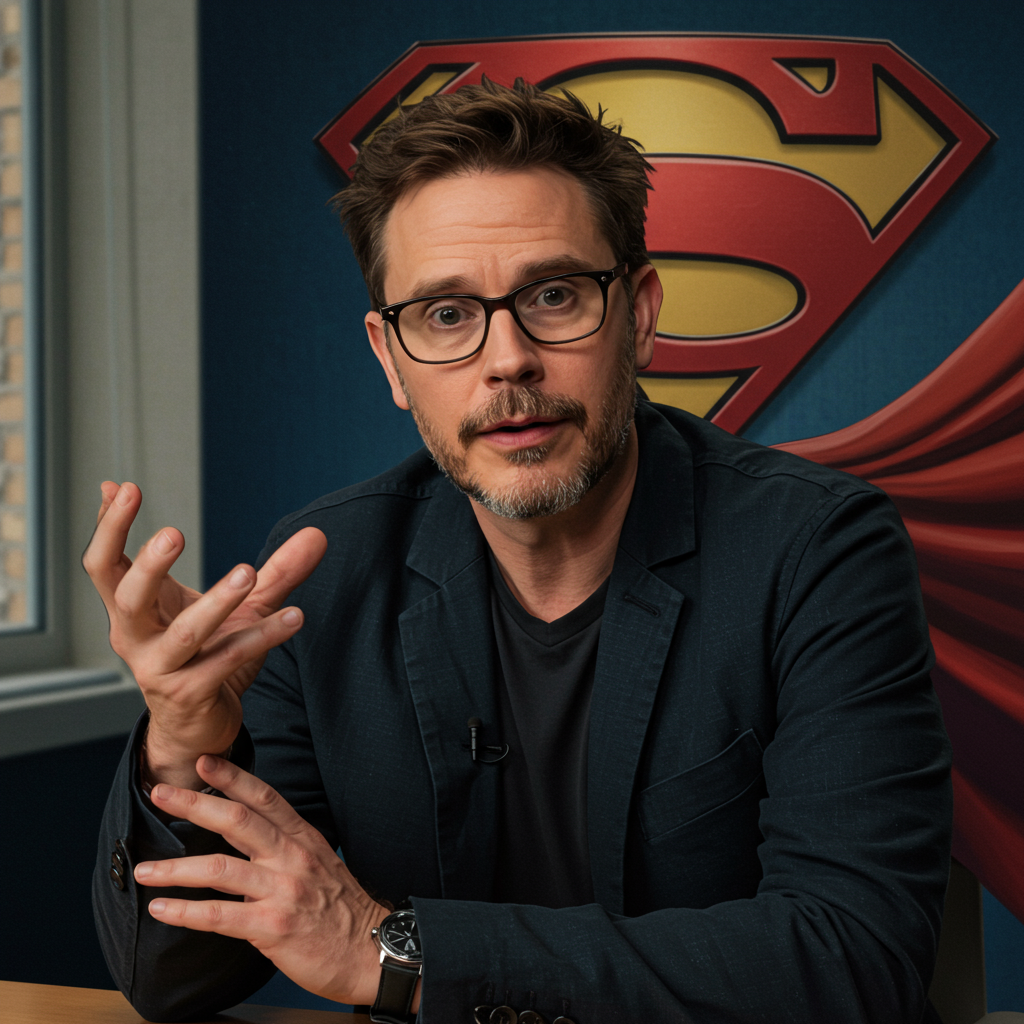For over three decades, the <a href="https://news.quantosei.com/2025/07/03/jurassic-world–rebirth-heading-to-28m-wednesday-near-128m-5-day-opening-in-sight/” title=”Ultimate Look at Jurassic World Rebirth's M Opening”>jurassic Park saga has captivated audiences, consistently facing the towering challenge of recapturing the sheer awe and primal terror of Steven Spielberg’s 1993 masterpiece. Now, the seventh film in this long-running franchise, Jurassic World: Rebirth, steps onto the cinematic stage with a clear mission. Positioned as a soft reboot, it endeavors to strip away the layers of intricate world-building and hybrid creature concepts that marked the recent Jurassic World trilogy. The goal? A return to the thrilling core: people surviving against prehistoric predators. But does this focused, back-to-basics approach truly inject fresh vitality into a series many feel is approaching extinction?
Initial reactions offer a complex picture. Reviews are notably mixed, reflecting the inherent difficulty any long-established franchise faces in balancing novelty with nostalgia. While the fundamental draw of seeing colossal dinosaurs remains potent, the shock value of thirty years ago is inevitably diminished. Critics land somewhere in the middle ground, suggesting competence rather than revolutionary brilliance, yet forecasts predict robust box office numbers. The simple presence of dinosaurs on screen continues to be a powerful, almost reflexive draw for global audiences.
The High-Stakes Gamble of a Jurassic “Rebirth”
Jurassic World: Rebirth arrives relatively soon after Jurassic World: Dominion‘s 2022 release, a quick turnaround pace criticized by some observers who argue modern franchises are rushed for immediate profit, leading to audience fatigue rather than genuine anticipation. Despite using the Jurassic World moniker, this new installment feels distinctly like a direct successor to the original Jurassic Park films. Executive Producer Steven Spielberg’s influence, along with his Amblin team, is reportedly palpable throughout the movie, even without him in the director’s chair. The return of screenwriter David Koepp, who penned the first two Jurassic Park scripts, was seen by some as an inspired choice, promising a connection to the series’ roots.
The clear motivation behind Rebirth is the significant financial success of the previous Jurassic World trilogy, each film grossing over a billion dollars worldwide. To continue mining this lucrative property, the studio opted for a fresh start with a new cast and a largely standalone narrative. This isn’t a direct continuation of the previous characters’ stories but rather a new adventure set within the established world, aiming to deliver familiar thrills with a new coat of paint.
Shedding Complexity: A Return to Elemental Thrills
Setting itself apart from the interconnected plots of its predecessors, Rebirth opts for a deliberately streamlined narrative. The global integration of dinosaurs and extensive corporate espionage subplots are largely abandoned. Instead, the film centers on a more contained, elemental premise: a survival story driven by human greed. Five years after Dominion, climate change threatens the remaining cloned dinosaurs, confining them to isolated tropical regions. A forbidden island off South America, Ile Saint-Hubert – a former InGen R&D site – becomes the focal point.
The plot, reportedly driven by a pharmaceutical executive named Martin Krebs from ParkerGenix (played by Rupert Friend), involves a covert expedition to Ile Saint-Hubert. Krebs seeks DNA samples from specific, abnormally large prehistoric creatures residing there, believing their unique biological traits hold the key to a revolutionary heart disease medication. He hires a team led by skilled covert operative Zora Bennett (Scarlett Johansson). The team includes dedicated paleontologist Dr. Henry Loomis (Jonathan Bailey), a former student of Dr. Alan Grant eager to see live dinosaurs, boat owner/pilot Duncan Kincaid (Mahershala Ali), and weapons specialist Bobby Atwater. Their mission is complex: obtain DNA samples from creatures like the Quetzalcoatlus, Mosasaurus, and the massive Titanosaurus using clever, but risky, methods, a risk Krebs reportedly downplays.
A major narrative complication arises early on when the expedition vessel rescues a family, the Delgados (Reuben, daughters Teresa, Isabella, and Teresa’s boyfriend Xavier), who survived a Mosasaurus attack after their boat sank. This subplot occupies a significant portion of the film’s first half. While seemingly intended to provide “normie” characters for audience relatability, this rescued family element is widely criticized in reviews. They are often described as “superfluous,” annoying, and “momentum-killers,” deemed an “unnecessary distraction” that slows the main action and stretches credibility. The film initially feels like a “Jurassic Jaws” scenario at sea before transitioning to an island survival tale akin to “Skull Island meets Swiss Family Robinson.” Characters, in general, are seen as underdeveloped, often serving primarily as potential dinosaur chow, though Zora and Duncan are noted as having slightly more depth. A new, mutated T-Rex variant, dubbed the “Distortus Rex,” is introduced, noted for its unique, almost alien-like appearance, serving as the film’s primary creature innovation.
Gareth Edwards: Crafting Scale and Spectacle
A significant strength frequently cited in reviews is the direction by Gareth Edwards. Known for his work on large-scale monster films like Monsters, Godzilla (2014), Rogue One: A Star Wars Story, and The Creator, Edwards is adept at capturing the sheer scale and imposing presence of colossal creatures. His visual direction is highly commended, often overcoming perceived weaknesses in the screenplay. Edwards excels at composing shots that make the dinosaurs feel genuinely massive and awe-inspiring, sometimes described as creating almost painterly cinematic images.
This focus on presenting the dinosaurs as powerful forces of nature is a deliberate effort to recapture some of the “Spielbergian alchemy” that made the original feel so special. Actor Mahershala Ali, part of the new cast, commented on the difficult nature of shooting such large films but found satisfaction in the completion phase. He specifically praised Edwards’ work in editing and assembling the final movie, a subtle point some interpreted as a contrast to the protracted production issues faced by his Marvel ‘Blade’ project.
Delivering the Pulse-Pounding Set Pieces
Where Rebirth is said to truly deliver is in its action sequences, particularly in the second and third acts. Audiences come to a Jurassic movie for the thrilling encounters, and under Edwards’ guidance, the film provides several successful, intense, and pulse-pounding set pieces. These moments are designed purely for excitement and survival suspense.
Specific examples highlighted include a dynamic T-Rex chase involving a river raft, a suspenseful pursuit through a gas station convenience store, and a favored boat-based sequence mentioned in one review. These are likened to distinct “rides” within the film, providing the visceral thrills the franchise is known for. The film is also noted for incorporating moments that are “fun and funny,” elements crucial to balancing the terror and maintaining an adventurous tone. While one review suggests there aren’t enough such sequences, the ones present are generally praised for their execution and the quality of the special effects used to bring the “sensational new dinosaurs” and familiar titans to life.
Navigating the Franchise Legacy: Where Does “Rebirth” Stand?
Evaluating Jurassic World: Rebirth requires positioning it within the expansive Jurassic Park saga. Can any sequel truly measure up to the revolutionary impact of the 1993 original? Most consensus suggests no; that film created a cultural moment difficult to replicate. However, sequels can succeed by reminding audiences why they initially fell in love with the concept.
Reviews indicate Rebirth makes a strong attempt at this. It is viewed by some as perhaps the “purest” Jurassic film since Spielberg’s The Lost World (1997), another sequel known for prioritizing thrilling set pieces and dinosaur encounters over complex plotting. The franchise has seen entries that effectively captured the spirit (The Lost World, Jurassic World 2015, parts of Fallen Kingdom) and those that struggled under novelty fatigue (Jurassic Park III, Dominion, other parts of Fallen Kingdom). Rebirth aims to land in the former category, trying to recapture that foundational excitement. However, the rapid pace of its release following Dominion has fueled discussions about franchise fatigue, with some arguing that constant reboots and sequels prevent properties from having time to “breathe,” questioning who the demand is truly coming from beyond financial stakeholders.
The Enduring Dinosaur Draw: Why Audiences Still Roar
Despite mixed critical reception on elements like script and characters, Jurassic World: Rebirth‘s commercial potential is undeniable. Box office projections are strong, targeting a significant opening weekend (estimated $115-$135 million for the first five days). This fundamental appeal stems from the sheer, almost primal, draw of dinosaurs. For three decades, seeing these creatures on screen has been enough to fill theaters, functioning almost on a “Pavlovian reflex” level for audiences who associate them with past thrilling cinematic experiences.
The film reportedly leans into this, eager to please its core audience by serving up precisely what they come for: more dinosaurs. Even if it provides more of a familiar experience rather than a fundamentally better or different one, that familiarity, combined with high-quality visual effects and Edwards’ direction, is a potent commercial formula. The financial engine driving the franchise is clear, ensuring that despite critiques or debates about fatigue, the prospect of seeing prehistoric giants brought to life remains a massive draw.
Weighing the Criticisms: Under the Hood
While praised for its visual spectacle and key action sequences, Jurassic World: Rebirth is not without its criticisms. The screenplay by David Koepp receives mixed feedback; while one source praises it for capturing an adventurous spirit, others criticize it for being generic, feeling like a rehash of earlier films, and contributing to pacing issues, particularly in the opening acts. Character development is a notable weak point; the new cast, despite featuring talented actors like Scarlett Johansson and Mahershala Ali, often feels thinly written, serving primarily functional roles. The rescued Delgado family subplot is frequently highlighted as a significant detractor, bogging down the narrative and adding little value beyond creating more potential victims. While the set pieces are praised for quality, one reviewer felt there weren’t enough of them to compensate for the less engaging portions, particularly the early “wandering around” sections. The core challenge of making familiar dinosaurs feel truly new again remains a hurdle the film attempts to clear through direction and new variants like the “Distortus Rex,” but the overall sense of novelty having diminished over decades persists.
Frequently Asked Questions
What is the core premise of Jurassic World Rebirth?
Jurassic World: Rebirth acts as a soft reboot for the franchise, stepping away from the complex plots of the recent trilogy. Its central premise revolves around a survival narrative on a remote island. A team is sent to collect DNA samples from powerful dinosaurs for a medical breakthrough, but they face the inherent dangers of encountering these prehistoric predators in the wild. The plot is streamlined to focus on core human-vs-dinosaur encounters.
Should fans see Jurassic World Rebirth based on reviews?
For fans whose primary interest is seeing exciting, well-executed dinosaur action sequences and experiencing a return to the fundamental survival thrills of the original films, Rebirth appears designed to satisfy that desire. While reviews are mixed, criticizing elements like a thin script, underdeveloped characters (especially the rescued family), and sometimes slow pacing, the film is often praised for its strong direction by Gareth Edwards and thrilling set pieces in the latter half. If you prioritize dinosaur spectacle over intricate plot and character depth, it’s likely worth watching.
How does Director Gareth Edwards impact Jurassic World Rebirth?
Gareth Edwards is highlighted as a key strength of Jurassic World: Rebirth. Known for his ability to depict scale and atmosphere in monster films, Edwards’ direction is praised for making the dinosaurs feel genuinely imposing and awe-inspiring. He is credited with crafting the film’s visually striking compositions and delivering the most successful and thrilling action sequences, such as the river T-Rex chase and gas station scene. His focus on spectacle and visual flair contributes significantly to the film’s ability to deliver core Jurassic thrills.
In conclusion, Jurassic World: Rebirth represents a strategic pivot for the aging franchise, aiming to refresh its formula by returning to a more elemental, survival-focused narrative. Leveraging the visual talents of director Gareth Edwards and leaning heavily on the enduring appeal of its prehistoric stars, the film largely succeeds in delivering the kind of pulse-pounding dinosaur action that defines the series at its best. While it faces criticisms regarding its script, character depth, and the inevitable challenge of diminished novelty, Rebirth appears poised to satisfy the core audience’s desire for more spectacle and suspense. It may not reach the groundbreaking heights of the original or fully escape the shadow of franchise fatigue, but it seems to land as a competent, entertaining, and commercially potent entry that reminds viewers why these ancient creatures continue to roar on the big screen.
Word Count Check: 1342 words



